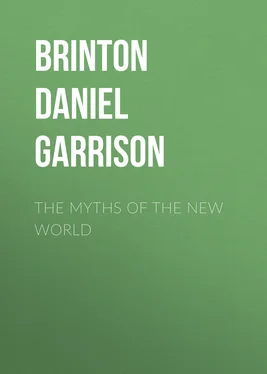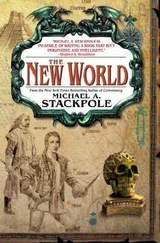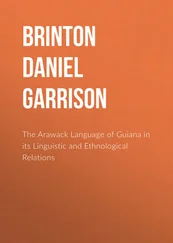Daniel Brinton - The Myths of the New World
Здесь есть возможность читать онлайн «Daniel Brinton - The Myths of the New World» — ознакомительный отрывок электронной книги совершенно бесплатно, а после прочтения отрывка купить полную версию. В некоторых случаях можно слушать аудио, скачать через торрент в формате fb2 и присутствует краткое содержание. Жанр: foreign_prose, История, Старинная литература, Мифы. Легенды. Эпос, foreign_edu, foreign_antique, на английском языке. Описание произведения, (предисловие) а так же отзывы посетителей доступны на портале библиотеки ЛибКат.
- Название:The Myths of the New World
- Автор:
- Жанр:
- Год:неизвестен
- ISBN:нет данных
- Рейтинг книги:5 / 5. Голосов: 1
-
Избранное:Добавить в избранное
- Отзывы:
-
Ваша оценка:
- 100
- 1
- 2
- 3
- 4
- 5
The Myths of the New World: краткое содержание, описание и аннотация
Предлагаем к чтению аннотацию, описание, краткое содержание или предисловие (зависит от того, что написал сам автор книги «The Myths of the New World»). Если вы не нашли необходимую информацию о книге — напишите в комментариях, мы постараемся отыскать её.
The Myths of the New World — читать онлайн ознакомительный отрывок
Ниже представлен текст книги, разбитый по страницам. Система сохранения места последней прочитанной страницы, позволяет с удобством читать онлайн бесплатно книгу «The Myths of the New World», без необходимости каждый раз заново искать на чём Вы остановились. Поставьте закладку, и сможете в любой момент перейти на страницу, на которой закончили чтение.
Интервал:
Закладка:
The number of such arbitrary characters in the Chipeway notation is said to be over two hundred, but if the distinction between a figure and a symbol were rigidly applied, it would be much reduced. This kind of writing, if it deserves the name, was common throughout the continent, and many specimens of it, scratched on the plane surfaces of stones, have been preserved to the present day. Such is the once celebrated inscription on Dighton Rock, Massachusetts, long supposed to be a record of the Northmen of Vinland; such those that mark the faces of the cliffs which overhang the waters of the Orinoco, and those that in Oregon, Peru, and La Plata have been the subject of much curious speculation. They are alike the mute and meaningless epitaphs of vanished generations.
I would it could be said that in favorable contrast to our ignorance of these inscriptions is our comprehension of the highly wrought pictography of the Aztecs. No nation ever reduced it more to a system. It was in constant use in the daily transactions of life. They manufactured for writing purposes a thick, coarse paper from the leaves of the agave plant by a process of maceration and pressure. An Aztec book closely resembles one of our quarto volumes. It is made of a single sheet, twelve to fifteen inches wide, and often sixty or seventy feet long, and is not rolled, but folded either in squares or zigzags in such a manner that on opening it there are two pages exposed to view. Thin wooden boards are fastened to each of the outer leaves, so that the whole presents as neat an appearance, remarks Peter Martyr, as if it had come from the shop of a skilful bookbinder. They also covered buildings, tapestries, and scrolls of parchment with these devices, and for trifling transactions were familiar with the use of slates of soft stone from which the figures could readily be erased with water. 5 5 Peter Martyr, De Insulis nuper Repertis , p. 354: Colon. 1574.
What is still more astonishing, there is reason to believe, in some instances, their figures were not painted, but actually printed with movable blocks of wood on which the symbols were carved in relief, though this was probably confined to those intended for ornament only.
In these records we discern something higher than a mere symbolic notation. They contain the germ of a phonetic alphabet, and represent sounds of spoken language. The symbol is often not connected with the idea but with the word . The mode in which this is done corresponds precisely to that of the rebus. It is a simple method, readily suggesting itself. In the middle ages it was much in vogue in Europe for the same purpose for which it was chiefly employed in Mexico at the same time—the writing of proper names. For example, the English family Bolton was known in heraldry by a tun transfixed by a bolt . Precisely so the Mexican emperor Ixcoatl is mentioned in the Aztec manuscripts under the figure of a serpent coatl , pierced by obsidian knives ixtli , and Moquauhzoma by a mouse-trap montli , an eagle quauhtli , a lancet zo , and a hand maitl . As a syllable could be expressed by any object whose name commenced with it, as few words can be given the form of a rebus without some change, as the figures sometimes represent their full phonetic value, sometimes only that of their initial sound, and as universally the attention of the artist was directed less to the sound than to the idea, the didactic painting of the Mexicans, whatever it might have been to them, is a sealed book to us, and must remain so in great part. Moreover, it is entirely undetermined whether it should be read from the first to the last page, or vice versa , whether from right to left or from left to right, from bottom to top or from top to bottom, around the edges of the page toward the centre, or each line in the opposite direction from the preceding one. There are good authorities for all these methods, 6 6 They may be found in Waitz, Anthrop. der Naturvoelker , iv. p. 173.
and they may all be correct, for there is no evidence that any fixed rule had been laid down in this respect.
Immense masses of such documents were stored in the imperial archives of ancient Mexico. Torquemada asserts that five cities alone yielded to the Spanish governor on one requisition no less than sixteen thousand volumes or scrolls! Every leaf was destroyed. Indeed, so thorough and wholesale was the destruction of these memorials now so precious in our eyes that hardly enough remain to whet the wits of antiquaries. In the libraries of Paris, Dresden, Pesth, and the Vatican are, however, a sufficient number to make us despair of deciphering them had we for comparison all which the Spaniards destroyed.
Beyond all others the Mayas, resident on the peninsula of Yucatan, would seem to have approached nearest a true phonetic system. They had a regular and well understood alphabet of twenty seven elementary sounds, the letters of which are totally different from those of any other nation, and evidently original with themselves. But besides these they used a large number of purely conventional symbols, and moreover were accustomed constantly to employ the ancient pictographic method in addition as a sort of commentary on the sound represented. What is more curious, if the obscure explanation of an ancient writer can be depended upon, they not only aimed to employ an alphabet after the manner of ours, but to express the sound absolutely like our phonographic signs do. 7 7 The only authority is Diego de Landa, Relacion de las Cosas de Yucatan , ed. Brasseur, Paris, 1864, p. 318. The explanation is extremely obscure in the original. I have given it in the only sense in which the author’s words seem to have any meaning.
With the aid of this alphabet, which has fortunately been preserved, we are enabled to spell out a few words on the Yucatecan manuscripts and façades, but thus far with no positive results. The loss of the ancient pronunciation is especially in the way of such studies.
In South America, also, there is said to have been a nation who cultivated the art of picture writing, the Panos, on the river Ucayale. A missionary, Narcisso Gilbar by name, once penetrated, with great toil, to one of their villages. As he approached he beheld a venerable man seated under the shade of a palm tree, with a great book open before him from which he was reading to an attentive circle of auditors the wars and wanderings of their forefathers. With difficulty the priest got a sight of the precious volume, and found it covered with figures and signs in marvellous symmetry and order. 8 8 Humboldt, Vues des Cordillères , p. 72.
No wonder such a romantic scene left a deep impression on his memory.
The Peruvians adopted a totally different and unique system of records, that by means of the quipu . This was a base cord, the thickness of the finger, of any required length, to which were attached numerous small strings of different colors, lengths, and textures, variously knotted and twisted one with another. Each of these peculiarities represented a certain number, a quality, quantity, or other idea, but what , not the most fluent quipu reader could tell unless he was acquainted with the general topic treated of. Therefore, whenever news was sent in this manner a person accompanied the bearer to serve as verbal commentator, and to prevent confusion the quipus relating to the various departments of knowledge were placed in separate storehouses, one for war, another for taxes, a third for history, and so forth. On what principle or mnemotechnics the ideas were connected with the knots and colors we are totally in the dark; it has even been doubted whether they had any application beyond the art of numeration. 9 9 Desjardins, Le Pérou avant la Conquête Espagnole , p. 122: Paris, 1858.
Each combination had, however, a fixed ideographic value in a certain branch of knowledge, and thus the quipu differed essentially from the Catholic rosary, the Jewish phylactery, or the knotted strings of the natives of North America and Siberia, to all of which it has at times been compared.
Интервал:
Закладка:
Похожие книги на «The Myths of the New World»
Представляем Вашему вниманию похожие книги на «The Myths of the New World» списком для выбора. Мы отобрали схожую по названию и смыслу литературу в надежде предоставить читателям больше вариантов отыскать новые, интересные, ещё непрочитанные произведения.
Обсуждение, отзывы о книге «The Myths of the New World» и просто собственные мнения читателей. Оставьте ваши комментарии, напишите, что Вы думаете о произведении, его смысле или главных героях. Укажите что конкретно понравилось, а что нет, и почему Вы так считаете.












